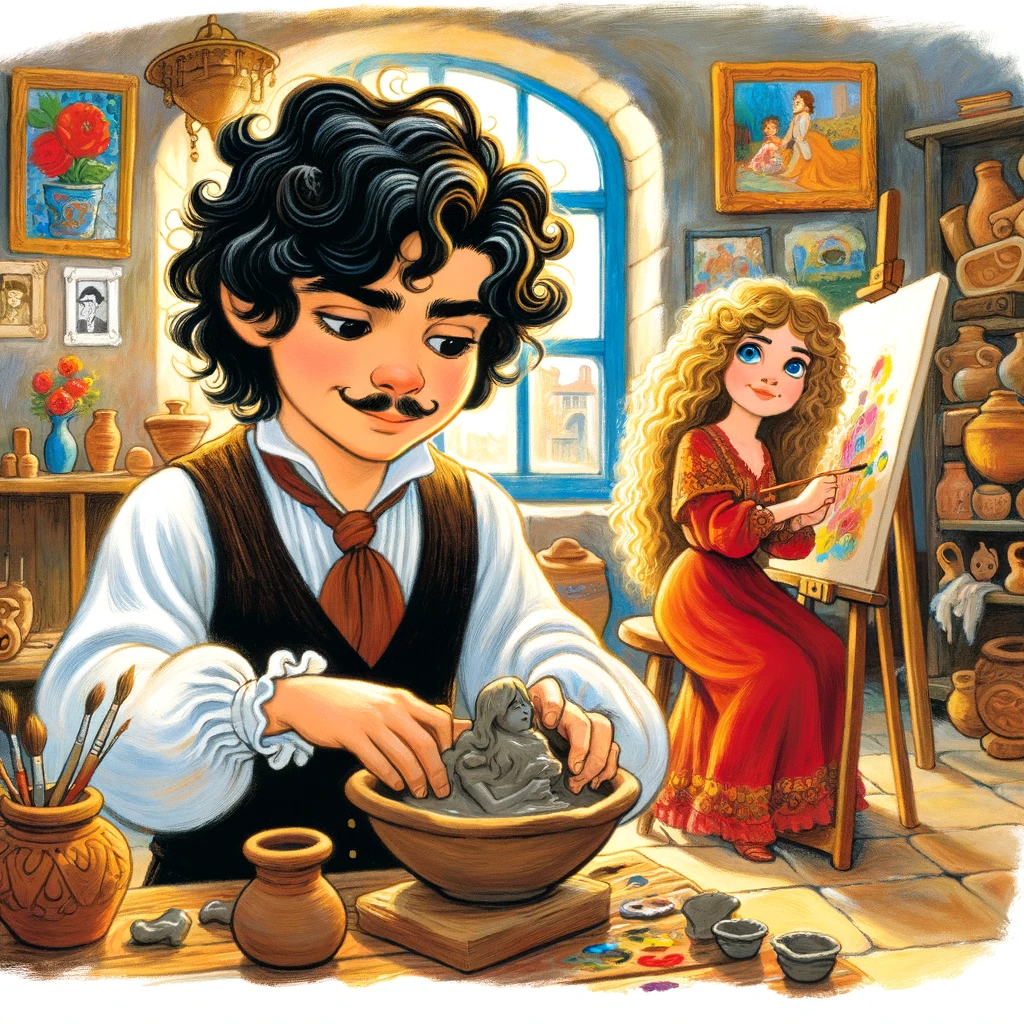In the small town of Famaillá in Tucumán, Argentina, a young boy named Juan Carlos Iramain discovered his passion for art. Juan Carlos was not just any child; he was an autodidact, teaching himself the intricate art of sculpting using the rich, red clay that was abundant in his hometown. As a child, his fingers would dance through the mud, molding figures and scenes from the stories his grandmother told him under the starlit sky.
Juan Carlos grew up surrounded by the lush landscapes of Tucumán, which inspired his early works. By the time he was nineteen, his talent had already begun to flourish, earning him a scholarship to study at the prestigious School of Fine Arts in Buenos Aires. It was there, in the bustling capital, that Juan Carlos’s world would expand in ways he had never imagined.
In Buenos Aires, he met Margarita Tulatodd, a fellow artist whose reputation as a painter had crossed oceans. Margarita, with her flowing blonde hair and eyes as deep and mysterious as the ocean, had come from abroad to explore the vibrant art scene in Argentina. She painted with colors so vivid that they seemed to leap off the canvas and fill the room with light.
The two young artists quickly discovered a shared vision of the world. They saw beauty not only in the grandiose but also in the mundane, and each sketch and sculpture, every stroke of the brush, was a testament to their belief that art could speak louder than words. In 1934, amidst a whirlwind of creativity and mutual admiration, Juan Carlos and Margarita decided to intertwine their lives as they had their art, and they married in a small, intimate ceremony surrounded by their artworks.
As husband and wife, Juan Carlos and Margarita embarked on a journey that took them far beyond the borders of Argentina. They traveled across the United States, showcasing their work in various art galleries, from the bustling streets of New York City to the sun-kissed coast of California. Each exhibition was a celebration of their love—for each other and for art.
Their travels were not just about displaying their work but also about gathering experiences. In New York, they marveled at the skyscrapers that scraped the heavens themselves and met artists who were as diverse as the city itself. In California, they walked through redwood forests so tall and ancient that they felt like young saplings in comparison.
Throughout their journeys, Juan Carlos continued to sculpt, his hands shaping clay into figures that seemed to capture the soul of whichever place they found themselves in. Margarita, on her part, painted canvases that were vivid snapshots of their travels, her palette reflecting the hues of the landscapes and cityscapes they visited.
However, it was not just the beauty of the world that inspired them but also its challenges. They saw the struggles of the people they met, the poverty and the splendor, and they poured all these emotions into their art. This depth of expression only brought them closer, forging a bond that was as strong as the sculptures Juan Carlos made and as enduring as the oil paints Margarita used.
Years passed, and their names became known not just in Argentina or the United States but around the world. They were invited to exhibitions in Europe, Asia, and beyond, their art resonating with universal themes of love, struggle, and beauty.
In their later years, Juan Carlos and Margarita decided to return to Famaillá, the place where it all began. They opened a small gallery and school where they taught young artists the techniques they had honed over decades of practice. They believed in giving back to the community that had given Juan Carlos his first handful of clay, the community that had started him on the path to his dreams.
Juan Carlos and Margarita lived out their days surrounded by young artists, each eager to learn and grow under the tutelage of the master sculptor and the renowned painter. Their legacy was not just in the sculptures and paintings that hung in galleries around the world but in the lives they touched with their art and their hearts.
And so, the story of Juan Carlos and Margarita is one of art transcending the boundaries of countries and souls, a testament to the fact that when we share our creativity, we can make the world a little more beautiful, one stroke, one sculpture at a time.


Cuentos cortos que te pueden gustar
Beyond the Screen of Fear
Finding Fun on a Sunny Day
Easter Fun in the Forest with Bruno and Friends
Autor del Cuento
Soy Francisco J., apasionado de las historias y, lo más importante, padre de un pequeño. Durante el emocionante viaje de enseñar a mi hijo a leer, descubrí un pequeño secreto: cuando las historias incluyen a amigos, familiares o lugares conocidos, la magia realmente sucede. La conexión emocional con el cuento motiva a los niños a sumergirse más profundamente en las palabras y a descubrir el maravilloso mundo de la lectura. Saber más de mí.